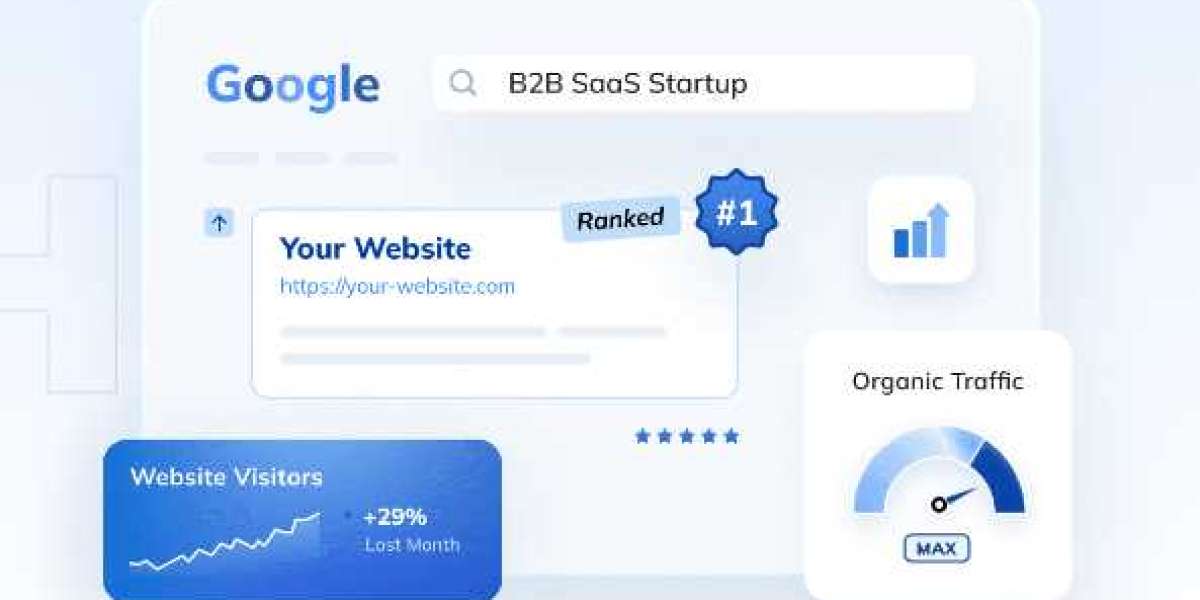This alignment ensures that every SEO effort contributes to broader business goals, from increasing revenue to enhancing customer satisfaction. This comprehensive guide will delve into the strategies and best practices for achieving this alignment, exploring how to integrate SEO with business objectives effectively.
1. Understanding B2B SaaS Business Objectives
Before aligning SEO goals with business objectives, it's essential to have a clear understanding of what your B2B SaaS business aims to achieve. Business objectives can vary widely but generally include:
- Revenue Growth: Increasing sales and expanding market share.
- Customer Acquisition: Attracting new customers and converting leads into paying clients.
- Customer Retention: Enhancing customer satisfaction and reducing churn.
- Brand Awareness: Building a recognizable and trusted brand in the market.
- Market Positioning: Establishing a strong presence and differentiation in the competitive landscape.
- Product Adoption: Encouraging the use of your software solutions.
Each of these objectives requires a tailored approach to SEO that supports and amplifies your business goals.
2. Setting Clear SEO Goals
With a clear understanding of your business objectives, the next step is to set specific, measurable, achievable, relevant, and time-bound (SMART) SEO goals that align with these objectives. Here’s how you can break it down:
2.1. Revenue Growth
- SEO Goal: Increase organic traffic to key product pages by 30% over the next 12 months.
- Strategy: Optimize product landing pages with high-intent keywords, create compelling content, and improve on-page SEO elements to attract and convert potential customers.
2.2. Customer Acquisition
- SEO Goal: Improve the conversion rate of organic search traffic by 15% within 6 months.
- Strategy: Focus on keyword research to target terms relevant to your ideal customer profile, enhance user experience on your website, and create optimized landing pages for lead generation.
2.3. Customer Retention
- SEO Goal: Increase the number of returning visitors from organic search by 20% in 9 months.
- Strategy: Develop valuable, relevant content that addresses customer pain points and interests, and improve site architecture to encourage repeat visits and engagement.
2.4. Brand Awareness
- SEO Goal: Achieve a top 3 ranking for brand-related keywords and increase branded search traffic by 25% within 12 months.
- Strategy: Invest in content marketing to enhance brand visibility, optimize for branded keywords, and build high-quality backlinks to increase domain authority.
2.5. Market Positioning
- SEO Goal: Rank in the top 5 for industry-specific keywords and increase organic traffic from niche markets by 20% in 6 months.
- Strategy: Conduct competitive analysis, create targeted content that addresses industry-specific topics, and engage in link-building efforts with industry-related sites.
2.6. Product Adoption
- SEO Goal: Increase organic traffic to product feature pages by 40% within 12 months.
- Strategy: Optimize feature descriptions with relevant keywords, create in-depth product guides and case studies, and ensure high-quality content that highlights the benefits and use cases of your software.
3. Conducting a Comprehensive SEO Audit
Before implementing your SEO strategies, conduct a thorough SEO audit to identify current performance, strengths, weaknesses, and opportunities. This audit should include:
- Keyword Analysis: Evaluate existing keyword rankings and identify new keyword opportunities that align with business objectives.
- On-Page SEO: Review meta tags, headings, content quality, and keyword usage on your website.
- Technical SEO: Assess site speed, mobile-friendliness, indexing issues, and overall site health.
- Content Audit: Analyze the performance of existing content and identify gaps or opportunities for improvement.
- Backlink Profile: Examine the quality and quantity of backlinks and identify potential link-building opportunities.
4. Developing an SEO Strategy Aligned with Business Objectives
With insights from the SEO audit, you can develop a strategic plan that aligns with your business goals. This plan should include:
4.1. Keyword Strategy
- Goal: Target high-intent keywords relevant to your business objectives.
- Actions: Perform keyword research to identify terms that your target audience uses. Create content around these keywords and optimize existing content to improve rankings.
4.2. Content Strategy
- Goal: Produce valuable content that supports your business objectives.
- Actions: Develop a content calendar that includes blog posts, white papers, case studies, and other content types that address customer needs and align with SEO goals.
4.3. Technical SEO
- Goal: Ensure your website is optimized for search engines and provides a seamless user experience.
- Actions: Address technical issues identified in the audit, such as improving site speed, fixing broken links, and enhancing mobile usability.
4.4. Link-Building Strategy
- Goal: Build high-quality backlinks to improve domain authority and search rankings.
- Actions: Engage in outreach efforts to industry influencers, guest post on relevant sites, and participate in online communities to earn valuable backlinks.
4.5. Analytics and Reporting
- Goal: Monitor and measure the effectiveness of your SEO efforts in relation to business objectives.
- Actions: Set up analytics tools to track key performance indicators (KPIs), such as organic traffic, conversion rates, and keyword rankings. Regularly review and adjust your strategy based on performance data.
5. Integrating SEO with Other Marketing Channels
To maximize the impact of SEO, integrate it with other marketing efforts, including:
5.1. Content Marketing
- Integration: Align your content marketing efforts with SEO goals by creating and promoting content that targets relevant keywords and addresses your audience's pain points.
5.2. Social Media
- Integration: Promote your SEO-optimized content on social media platforms to drive traffic, increase engagement, and build brand awareness.
5.3. Email Marketing
- Integration: Use email campaigns to drive traffic to your website and landing pages, and incorporate SEO insights into your email content strategy.
5.4. Paid Advertising
- Integration: Align paid advertising efforts with SEO goals by targeting complementary keywords and optimizing ad copy based on SEO insights.
6. Measuring Success and Adjusting Strategies
Regularly measure the success of your SEO efforts against your business objectives. Key metrics to monitor include:
- Organic Traffic: Track changes in organic traffic to key pages and overall site performance.
- Keyword Rankings: Monitor the rankings of targeted keywords and adjust your strategy as needed.
- Conversion Rates: Evaluate the effectiveness of SEO in converting visitors into leads or customers.
- Backlink Quality: Assess the impact of your link-building efforts on domain authority and search rankings.
Based on performance data, make adjustments to your SEO strategy to address any shortcomings and capitalize on opportunities for improvement.
7. Case Studies and Examples
To illustrate how aligning SEO with business objectives can drive success, consider the following case studies:
Case Study 1: SaaS Company A
Objective: Increase revenue through organic search.
Strategy: Optimized product landing pages with high-intent keywords, created in-depth content about product features, and improved site structure.
Result: Achieved a 35% increase in organic traffic and a 20% increase in conversions from organic search within 9 months.
Case Study 2: SaaS Company B
Objective: Enhance brand awareness.
Strategy: Focused on content marketing to build brand visibility, targeted branded keywords, and engaged in industry-specific link-building efforts.
Result: Ranked in the top 3 for branded keywords and saw a 30% increase in branded search traffic within 6 months.
Conclusion
Aligning your B2B SaaS SEO Agency with your business objectives is crucial for driving meaningful growth and achieving success in a competitive market. By setting clear SEO goals that support your broader business objectives, conducting thorough audits, developing strategic plans, integrating SEO with other marketing efforts, and continuously measuring and adjusting your strategies, you can ensure that your SEO efforts contribute to your business's overall success. Implement these strategies, and you'll be well on your way to leveraging SEO as a powerful tool for achieving your B2B SaaS business goals



